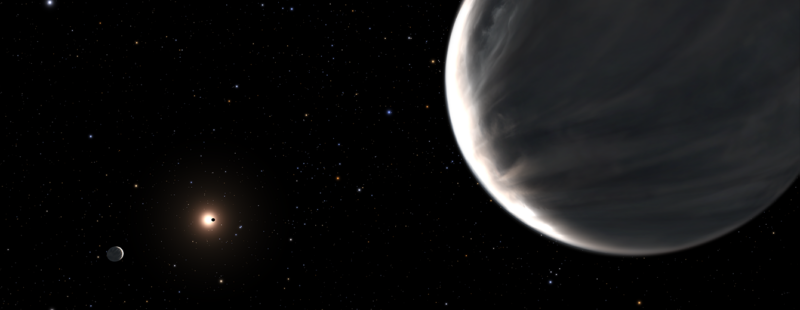
NASA, ESA, Leah Hustak
Two planets originally discovered by the Kepler mission may not be what we thought they were. Based on an initial characterization, these planets were thought to be rocky bodies somewhat larger than Earth. But continued observation has yielded data indicating that the planets are far less dense than originally thought. And the only realistic way to get the kind of densities they appear to have now is for a substantial portion of their volume to be taken up by water or a similar fluid.
We have bodies like this in our Solar System, notably the moon Europa, which has a rocky core surrounded by an ice-covered watery shell. But these new planets are much closer to their host star, meaning their surfaces are likely a fuzzy border between a vast ocean and a steamy atmosphere.
Let’s review it
There are two main methods of finding an exoplanet. One is to observe dips in their star’s light, caused by planets with an orbit that takes them between the star and Earth. The second is to monitor whether the star’s light periodically shifts to redder or bluer wavelengths, due to the motion of the star due to the gravitational pull of the orbiting planets.
Each of these methods can tell us whether or not a planet is present. But having both gives us a lot of information about the planet. The amount of light blocked by the planet can give us an estimate of its size. The amount of redshift and blueshift of the star’s light can indicate the mass of the planet. With both, we can find out its density. And density limits the types of materials it can be made of: low density means gas-rich, high-density means rocky with a metal-rich core.
This is exactly what we have been able to do with the Kepler-138 system. Data from both of these methods suggested that the system contains three planets. Kepler-138b appears to be a small rocky body about the size of Mars. Kepler-138c and Kepler-138d both fell into the category of super-Earths: rocky planets slightly larger than Earth and considerably more massive. All of them orbited quite close to Kepler-138a, a red dwarf star, with the most distant (Kepler-138d) orbiting at 0.15 astronomical units (one AU is the typical distance between the Earth and the Sun).
In the grand scheme of things, there was nothing unusual about this system that required a second look. But the researchers thought it was a good candidate for studies of the planet’s atmospheres. While the planet will block all light as it transits in front of its host star, a small amount of light will pass through the atmosphere on its way to Earth. And the molecules in that atmosphere will absorb some specific wavelengths, allowing us to discern their presence.
To perform that study, a team of researchers obtained data from the Hubble and Spitzer Space Telescopes, which were timed for when Kepler-138d was transiting in front of the star. And that’s when things started to get weird.